The Covid-19 pandemic has disrupted all aspects of life in ways never before seen in peacetime and 250-year-old Semmelweis University was no exception to the difficulties. Although the sudden outbreak of the pandemic did not allow much time for action, our institution armed with the experiences of a quarter millennium adapted to the new circumstances promptly, took up a leading role in the fight against the virus and has managed to turn the challenges into beneficial opportunities. Whether it was World War I, the economic crisis of 1930, the bombing of Budapest or Covid-19, the timely response and quick adaption to the challenges have made Semmelweis University a key player in overcoming daring times. In our article, Professor Dr. Béla Merkely, Rector speaks about Semmelweis University’s role in managing the coronavirus epidemic and laying the foundations of new directions in research, education and patient care.
In addition to the challenges caused by the epidemic, Semmelweis University has also been provided with an opportunity to reconsider its strategic concepts. The virus has directly affected all three pillars of Semmelweis University’s mission: education, research and patient care. The new curriculum in medical education implemented in the academic year 2019/2020 needed immediate adjustment to ensure a seamless transition to distance education. New research projects targeting the coronavirus were launched, streamlined and brought under one umbrella. Patient care was restructured, volunteers were drawn in, new departments were created and the university provided the basis for Hungary’s strategy in disease control. The experiences of the past year have reinforced Semmelweis University’s role as a leading institution of biomedical sciences.
Leading Hungary’s representative screening programme
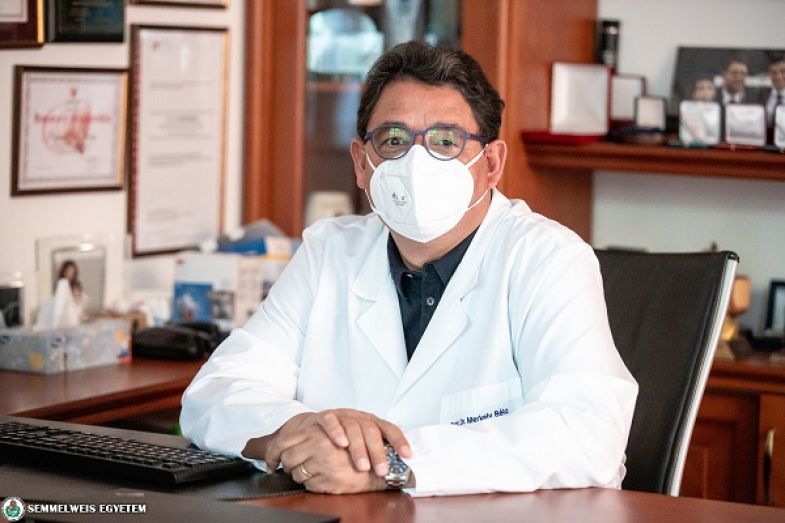 Since Semmelweis University is the largest health care institution in Hungary catering to the health care needs of about 5% of the Hungarian population, it has played a decisive role in PCR testing, the treatment of coronavirus patients and conducting a nationwide representative screening programme.
Since Semmelweis University is the largest health care institution in Hungary catering to the health care needs of about 5% of the Hungarian population, it has played a decisive role in PCR testing, the treatment of coronavirus patients and conducting a nationwide representative screening programme.
The first coronavirus patient in Hungary, was confirmed 4 March 2020 and 12 days later Hungary decided to close the borders and severe restrictions were implemented. Thanks to the immediate measures, the number of cases were kept low in the first wave, but in order to gain a clear picture of the extent and dynamics of the epidemic, H-UNCOVER, a nationwide representative screening programme was organized. Sampling and the evaluation of the tests were performed by the four Hungarian medical universities under the supervision and coordination of Semmelweis University. The project involved over 1,200 health care workers testing more than 10,000 participants in two weeks.
“The tireless efforts of the healthcare personnel and the administrative staff, as well as the coordinated use of research capacities and scientific know-how generated an outcome that served as a well-founded basis for the country’s disease control policy. The results showed a very low positivity rate of the first wave, which enabled the government to lift the restrictions.”, commented Dr. Béla Merkely on the outcome of the project.
Restructuring patient care
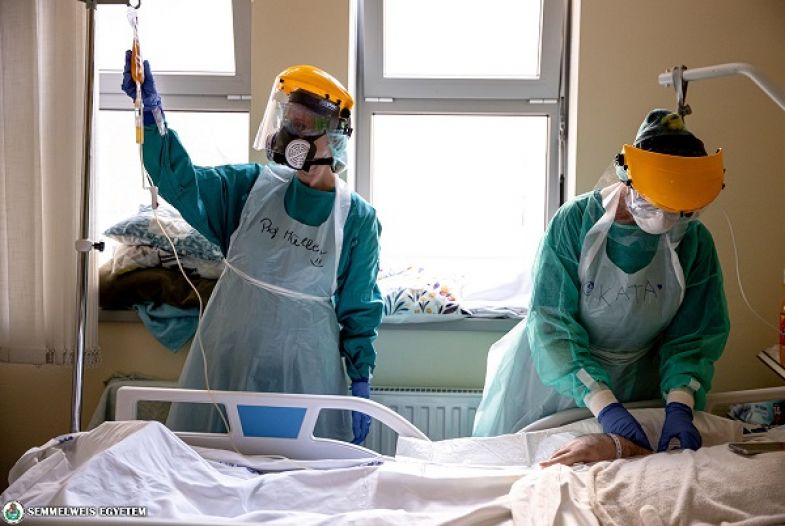
In addition to performing such a large-scale sampling assisting the country’s decision making and crisis management, Semmelweis University has taken an active role in the care of COVID-19 patients since the onset of the epidemic in Hungary. Two departments, the Emergency Department and the Department of Pulmonology have been restructured to provide high quality patient care tailored to the current demands. The former was the first to open a separate COVID department accepting and treating inpatients with access to an onsite CT system. Thanks to the device, patient monitoring is continuous, and the experiences of the first wave as well as the availability of evidence based therapies have enabled faster and more secure patient care in the second wave.
According to the Rector, the challenges of the sudden outbreak of the epidemic in March 2020 and the exponentially increasing number of cases of the second wave could not have been overcome without the commitment, cooperation and teamwork of our university’s citizens. Our colleagues at the COVID departments have been under great physical and emotional pressure, working long hours often without breaks.
“Despite the trying circumstances, Semmelweis citizens have ceaselessly contributed to the maintenance of general health care services and the continuous treatment of COVID patients.”, said Dr. Béla Merkely about the commitment and mutual efforts of the university staff.
Students working in the frontline
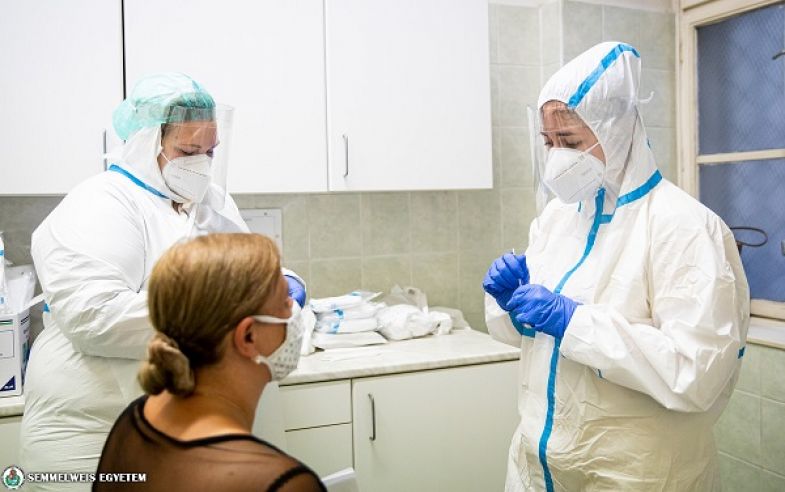
As a higher education institution specializing in health sciences, our mission is to educate the future generation of knowledgeable and dedicated health care professionals building on first-hand experiences and knowledge transfer. Semmelweis University implemented distance education after a week of preparatory period in less than three weeks following the identification of the first positive coronavirus case in Hungary.
“To keep on providing high quality education and to ensure the best conditions for graduating students, we aimed at maintaining the personal element as much as possible.”, the Rector told about the main guidelines of the digital education programme.
During the first wave, most of the classes went online, while practical courses were delayed and held after the restrictions were lifted. Since the introduction of the restrictive measures, students have volunteered to take part in various aspects of patient care, including PCR testing, which enabled them to learn how to communicate effectively, how to work in a team, how to follow the steps of a procedure, how to handle workload and overcome stressful situations. This was an excellent opportunity for students in their pre-clinical studies to be exposed to clinical settings early on, as well as to gain hands-on experiences in time and stress management. As the number of cases started to increase in the second wave, more PCR tests were required and students got involved in the official epidemic control strategy working not only at university testing points, but helping the National Ambulance Service and taking part in sampling campaigns even abroad. Their contribution to the fight against the coronavirus has been significant, and to recognize their work, a new elective course on activities related to the coronavirus epidemic was introduced and integrated into the curriculum. In addition to receiving credit points for the completion of the course, students are also eligible for a scholarship.
As Dr. Béla Merkely put it: “Seeing their efforts, dedication and exemplary attitude in the fight against the coronavirus,
I believe that we are on the right track to training truly committed, conscientious and well-rounded health professionals.”
Launching research targeting the coronavirus
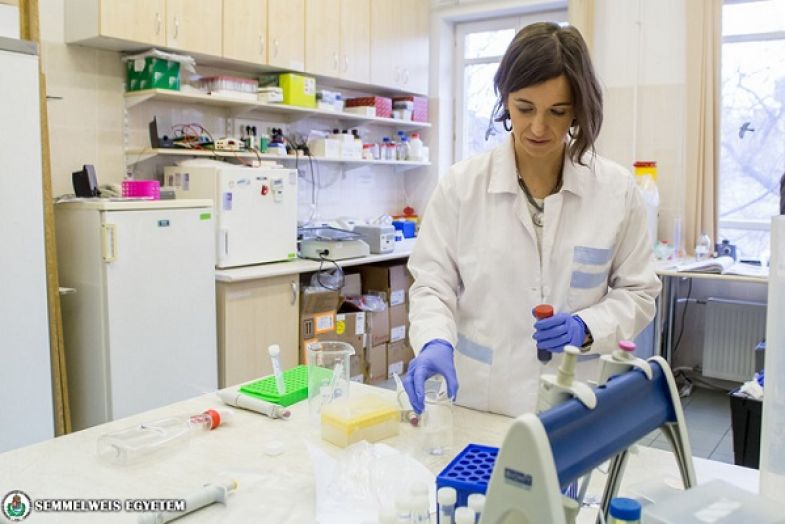
In addition to being the largest health care provider and oldest medical university in Hungary, Semmelweis University is also well-known for its diverse research activities.
“It was Semmelweis University’s duty as a research institution to take immediate action on various levels in response to the coronavirus pandemic. In line with Semmelweis University’s multidisciplinary approach, inter-departmental, international and industry collaborations have been formed to add scientific and clinical value to the fight against the coronavirus. In order to optimize research activities in the fields of basic research, diagnostic development and therapy development targeting the coronavirus, Semmelweis University set up a consortium.”, the Rector said about the steps taken in the field of research.
The information- and nanotechnology research groups aimed to better understand the mechanism of infection and generate research results that may contribute to the development of a synthetic, liposome-based vaccine. Alongside, a study focusing on the physical properties of the coronavirus was conducted on active, infectious virus particles using atomic force microscopy. Diagnostic development involved the possibilities and limitations of detecting the coronavirus in saliva samples in order to speed up and simplify testing.
The epidemiological situation has also brought about even more intensive scientific cooperation between the academic, university and private sectors in order to find a treatment for Covid-19 as soon as possible. Semmelweis University has played an important role in the development of a new generation portable ventilator as well as in a clinical trial on the indication extension of an antidepressant to treat complications, such as pneumonia, caused by the coronavirus.
Looking into the future
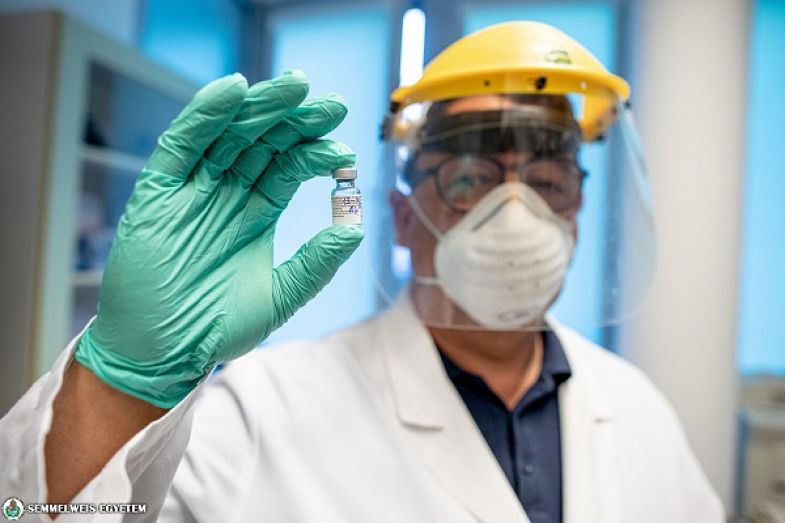
As much as the coronavirus has disrupted everyday life, the normal operation of higher education and health care services, it has presented us with challenges that we have been able to overcome and turn into beneficial opportunities. One such obstacle seemed to be the rapid shift to distance education in disciplines that are strongly practice oriented. In addition to the huge amount of digital educational material produced, new digital tools have been acquired and embedded in the existing infrastructure. Our university underwent an educational revolution, which has brought not only technical but methodological changes as well, requiring more active and creative participation from the students.
In recognition of his work in the fight against the coronavirus and the key role he played in informing the public, Dr. Béla Merkely was chosen 2020 Person of the Year by Figyelő, a weekly business magazine.
As Professor Merkely summarized the forward looking developments in education: “With this head start, we have been able to reconsider certain elements in our curriculum and make digital education more prominent.”
The outbreak of the pandemic has also highlighted the shortcomings of today’s society and the health care system. To prepare for similar future events and to make our social and health care systems more effective in responding to systemic challenges, we need to develop ways promoting swift diagnosis, efficient therapy and large-scale vaccination programmes.
“We are determined to set up an R&D centre that will facilitate the quick and effective realization of necessary developments in the event of a future pandemic.”, he said about the plans in research and development.
This implies that knowledge generated at universities cannot be used exclusively in academic settings in isolation. Challenges can only be overcome with the close cooperation of several disciplines: health care, engineering and informatics, involving industry partners in the process. Seeing how the pandemic has put an enormous demand on human resources in diagnostics and patient care, our R&D strategy places emphasis on artificial intelligence (AI) based developments. Semmelweis University will work on the further refinement of AI assisted diagnostic procedures mainly in the field of medical imaging, on data management to enable the transformation of data into information supporting prompt clinical decision making, as well as on drug and active substance development.
As Semmelweis University also runs nine official vaccination centres administering the coronavirus vaccine to over 1,000 individuals per day, we are confident that the university can return to normal operation in the near future.
“Despite the difficulties the coronavirus pandemic has caused, Semmelweis University
will emerge even stronger and armed with novel experiences, knowledge, fortified values and a united community
that we will be able to utilize in pursuing our mission.”, Dr. Merkely concluded the experiences and takeaways of the coronavirus epidemic.










